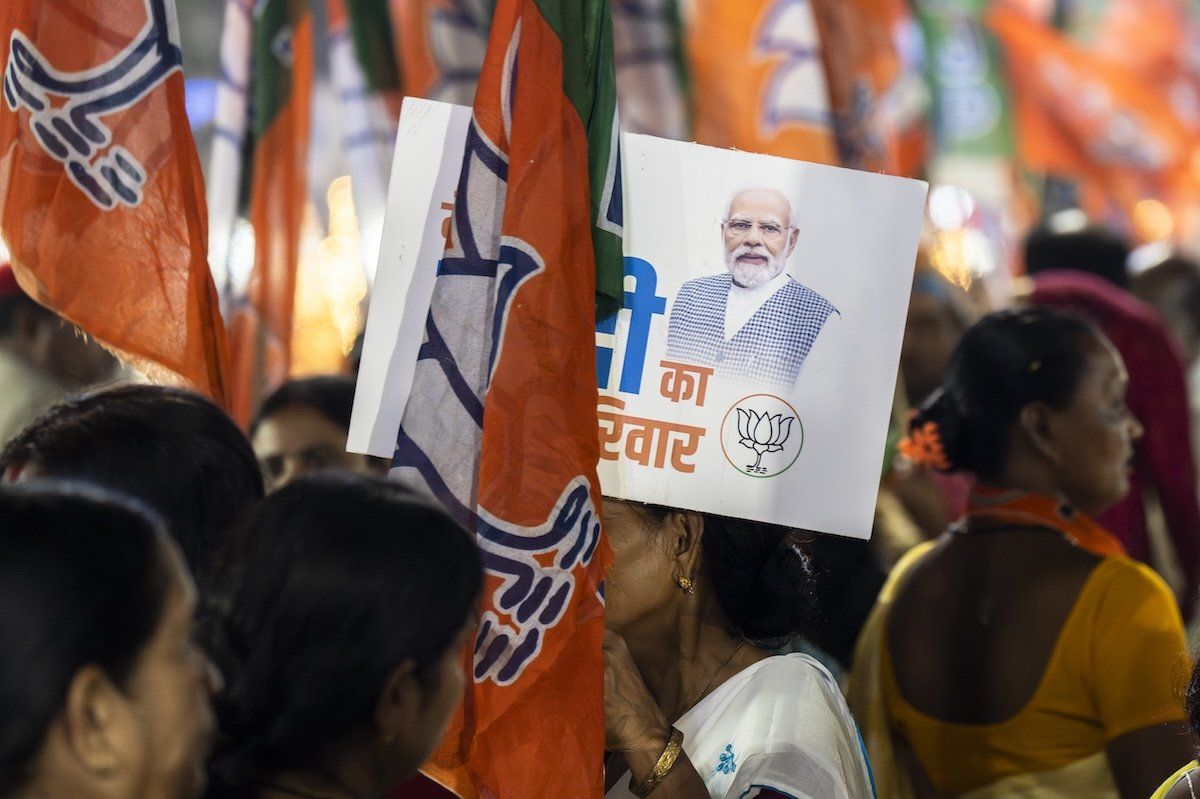The world’s most populous country will hold elections between April 19 and 1 June for its lower house of parliament, the Lok Sabha. The 543-member chamber is India’s primary legislative body, and its composition will determine which party or coalition gets to nominate a prime minister and form the next government. Over the 44-day electoral period, nearly 970 million people will be eligible to vote, the most ever. More than 1 million polling stations will be set up, and officials will be dispatched to remote corners of the country’s vast geography to collect ballots.
Prime Minister Narendra Modi, one of the world’s most popular heads of state, is expected to lead his Bharatiya Janata Party to a comfortable victory and secure a third consecutive term in office. We sat down with Eurasia Group experts Rahul Bhatia and Pramit Pal Chaudhuri to learn more about the upcoming elections.
What are the main issues for voters?
The chief concerns are inflation, particularly high food prices, and unemployment, especially among the youth. More than one-third of Indians believe they are worse off than before the pandemic-induced lockdowns, while about two-thirds say it is now harder to find a job. Though religious-political issues are also on voters' minds, they hold less weight than economic ones.
Despite apparent concerns about the economy, an overwhelming 75% of Indians approve of Modi’s leadership. He gets high marks for delivering targeted welfare schemes, upgrading the country’s infrastructure, and raising India’s international profile. He also gets credit for implementing elements of the BJP’s longstanding religious-political agenda, such as constructing a grand temple dedicated to the Hindu deity Ram and revoking the special autonomous status of the Muslim-majority Jammu and Kashmir region.
Modi has come under criticism for alleged anti-democratic tendencies – why is that and will this be a factor for voters?
Under Modi, press and political freedoms have suffered. Opposition parties have accused the prime minister of using government investigative agencies to harass opposition leaders and constrain their ability to contest elections. Other critics allege the government has undermined India’s secular constitution and its pluralistic values with its actions favoring the country’s Hindu majority population. While Modi's attitude toward civil liberties is not unlike that of past prime ministers who enjoyed a similar single-party majority, there are genuine concerns about democratic backsliding in India. Nevertheless, apart from a small urban elite, the average Indian voter doesn’t seem concerned.
What is the state of the opposition alliance?
Since the 2014 elections that brought Modi to power, the Indian National Congress, India’s largest opposition party, has struggled with a lack of clear leadership and an inability to craft an alternative political narrative that could capture the imagination of voters. It recently pivoted to an agenda of social and economic justice, but this strategy has not yet been tested at the ballot box.
Last July, the Congress and 25 smaller parties formed the Indian National Developmental Inclusive Alliance, aka INDIA, a big-tent coalition to pool their vote shares and create a stronger challenger to Modi and the BJP. However, the alliance has failed to cohere, and some regional parties have defected to the BJP’s alliance. Moreover, while seat-sharing arrangements had been agreed upon in some states, key regional parties have decided to contest their strongholds on their own, defeating the alliance’s purpose. The Congress and its partners remain far behind the BJP in the polls; they are not fighting to win the upcoming elections but rather to preserve their respective geographic power bases and limit Modi’s majority.
Modi has indicated he wants an expanded parliamentary majority – what does he aim to achieve in a potential third term?
Modi has said he aims to win 370 seats in the lower house of parliament, up from 303 at present. He is seeking a strong mandate to push through legislative changes – some of which are unpopular or challenge vested interests – that he believes are necessary to bolster economic growth. He wants to simplify the tax code and advance reforms on land, labor, agriculture, education, health, and electricity – which require the support of the states. A new Modi-led government would also continue efforts to upgrade infrastructure, including roads, railways, and airports.
Separately, Modi would seek to end India’s religion-based civil laws governing marriage and other issues and subsume them into a single uniform civil code – a process that has already begun at the state level.
Is Modi expected to serve just one more term? Is there a succession plan? What legacy does he want to leave behind?
It’s anybody’s guess whether another five-year term would be the last for Modi, who is 73 years old. He wants to leave behind a legacy of cementing India’s middle-income country status, raising its international stature, and correcting what the BJP believes are institutional biases against India’s Hindu population.
It does seem clear, however, that the BJP will face a succession problem when Modi steps down. The polls indicate that one in three people who vote for the BJP do so because they like Modi, not the BJP. As a result, the party might want Modi to contest the next elections in 2029 and then step down after that. While Amit Shah, the home minister, seems to be Modi’s preferred successor, he would probably face a leadership challenge from Yogi Adityanath, the chief minister of Uttar Pradesh, and possibly from Himanta Biswa Sarma, the chief minister of Assam.
Edited by Jonathan House, Senior Editor at Eurasia Group
